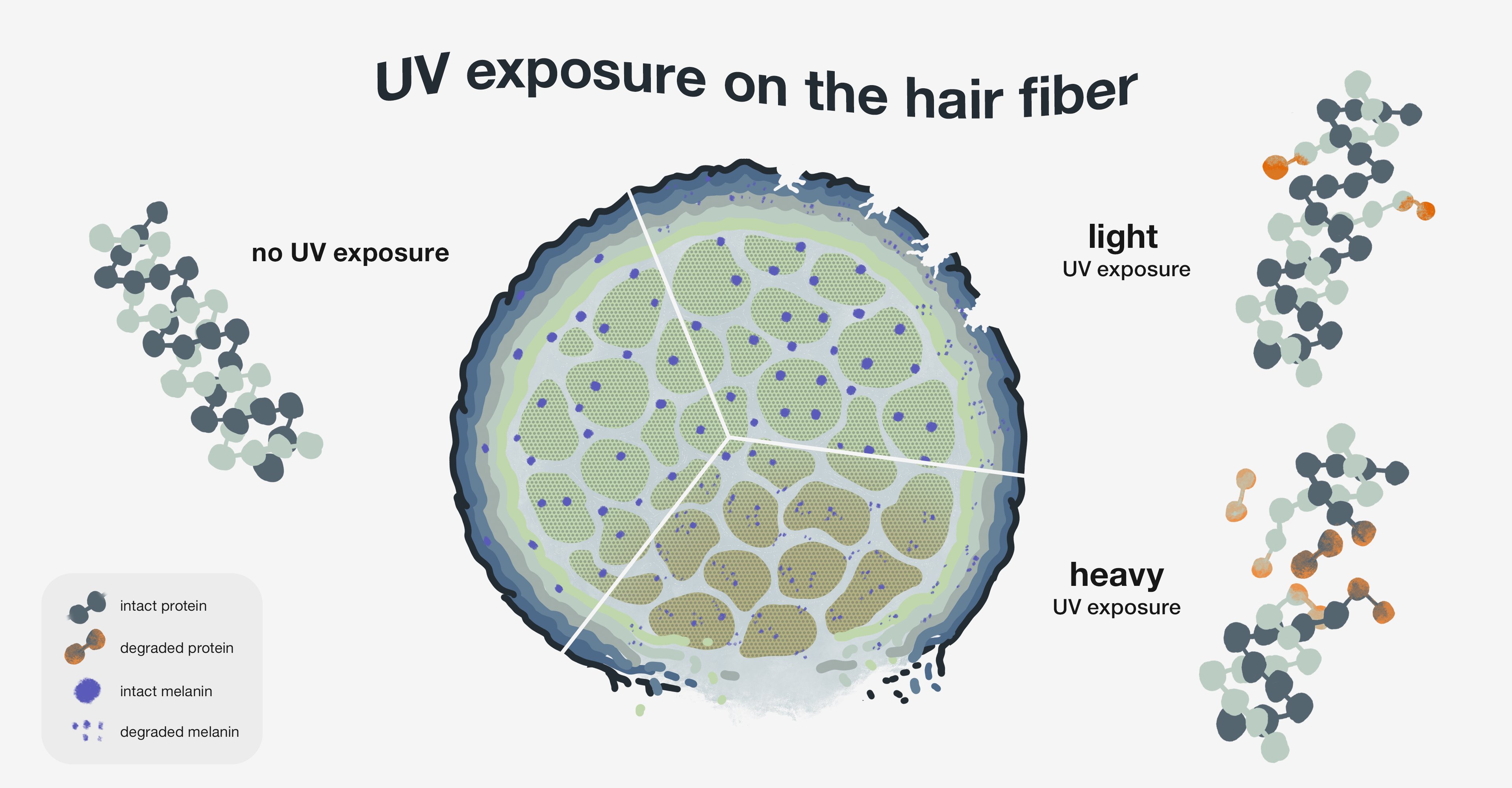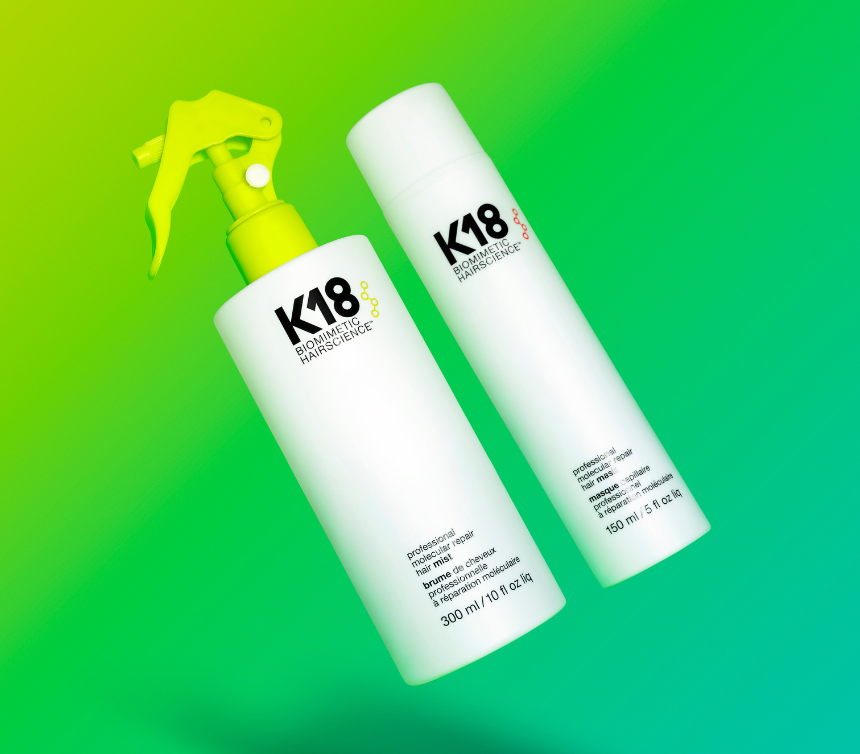You know how chemical services like bleaching, coloring, or heat styling can damage hair? Exposure to the environment can hurt hair the exact same way.
Let's talk about our hair—and skin’s—greatest environmental enemy: Ultraviolet (UV) radiation.
what is UV radiation?
UV is a type of energy naturally emitted by the sun, and while UV gets a bad rap, not all of it is bad. Certain wavelengths of UV light may be used to treat alopecia, for example. But we also know that too much UV can have harmful effects on the skin, and it can hurt hair, too. Damage caused by UV rays is called photodamage, which is linked to a host of hair problems like reduced strength, lack of moisture, faded color, decreased shine, and stiff and brittle hair.
UV + hair’s structure
Hair is made up of different layers (explore them with our AR experience), which are all affected by UV. As the cuticle is the outermost defense against damage, it takes the brunt of UV exposure—which causes its lipids and proteins to degrade. The cuticle cells lift, making it more fragile and prone to swelling when in contact with water. This leaves the cortex layer underneath more exposed to the outside world, and potential environmental damage. UV can also break the chemical bonds in the cuticle and cortex that cross-link hair’s proteins, further weakening the structure and strength of hair.

oxidative reactions
UV rays don’t just break bonds. They can break off electrons from different parts of the hair fiber, producing highly reactive molecules called free radicals or reactive oxygen species (ROS). These molecules react with the surrounding lipids and proteins in hair, breaking them down and producing even more radicals, causing a vicious cycle of damage.
Causing chaos, ROS and free radicals degrade the structure of hair, breaking down hair proteins and melanin, oxidizing lipids on and in hair, and changing its color. If oxidation sounds familiar, you’re probably thinking of rust on metal. But get this: oxidative damage is also the kind hair experiences during chemical processes like bleach and color. Even worse, this environmental oxidative damage is amplified when hair is wet or exposed to high humidity.
water worsens damage
Water acts as a medium to allow substances to interact with each other more easily, making it an excellent chemical solvent. Unfortunately for hair, the more problematic substances interact, the higher chance they will react negatively. This means more free radicals and ROS, further enhancing oxidative reactions at higher humidity.
When hair is exposed to UV in a humid environment, its structure begins to degrade: first the lipids in hair are converted to highly reactive chemicals that ‘infect’ other lipids and even proteins, creating more and more reactive species that ultimately break down and produce holes in the cuticle.
color change from UV
UV radiation is known to cause color changes in every hair type. These changes are even more pronounced with lighter hair. Caused by photodamage to the melanin granules that give hair its pigment inside the cortex, these color changes can depend on the type, size, and quantity of melanin found naturally.
The melanin in hair affords some protection to the cortex from photodamage, blocking free radicals and filtering adverse UV radiation. However, as they absorb UV rays, these melanin pigments break down and become lighter. UV is actually why the bleached look of surfer hair is a thing—the combination of UV radiation, water, and minerals causes an oxidative reaction that breaks down melanin and lightens hair.
Melanin degradation is the same process that occurs when hair is bleached. The melanin in bleached hair is already degraded through bleaching, diminishing the photo-protectiveness (protection against photodamage) that melanin gives hair. This means that bleached hair is more readily damaged by the sun.
preventing photodamage
We’re often told to protect our skin from the sun and damaging UV rays—and the same is true for hair. If you’re planning to soak up the sun, wear a hat to shield your hair when the UV index is high. To minimize and prevent all kinds of damage, practice a holistic hair routine that prioritizes molecular repair to rebuild your hair’s core protein structure—keeping hair strong and healthy.



